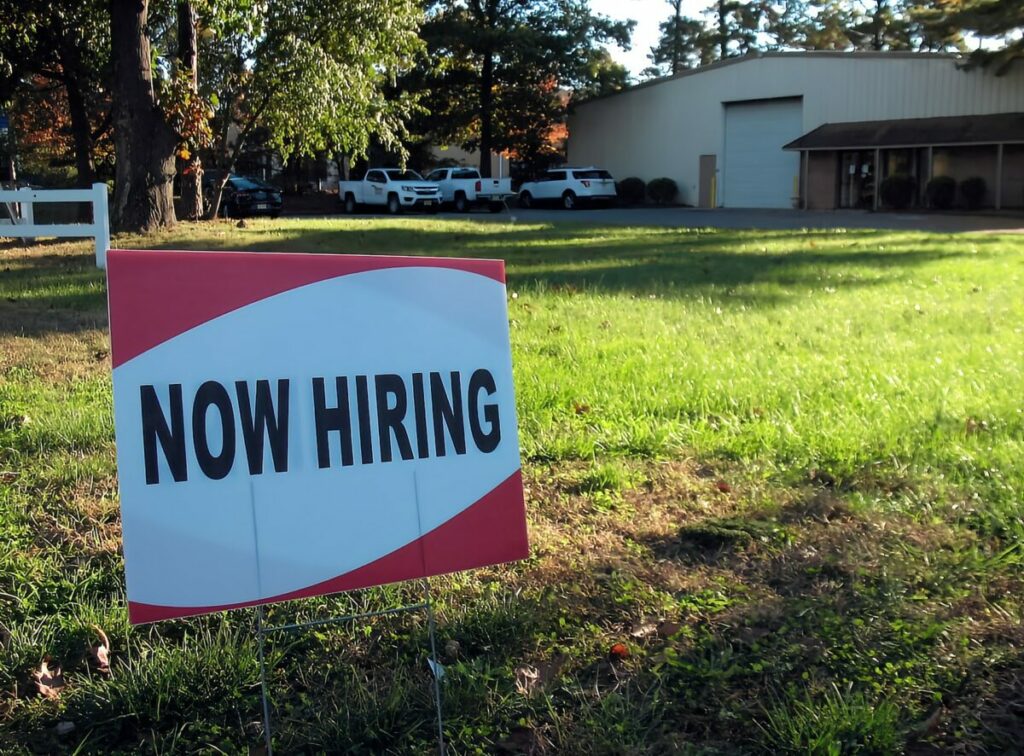Navigating the complexities of an employee’s resignation can be a challenging task for any employer. Whether it’s a sudden departure or a well-anticipated exit, each scenario requires a thoughtful and strategic approach. This guide is crafted to equip you, the employer, with the necessary tools and understanding to handle these situations with professionalism and poise.
From the initial response to an employee’s notice to the final stages of their departure, each section of this guide outlines key steps and considerations, ensuring you are well-prepared at every juncture. Included is a comprehensive resignation acceptance letter template, an essential document in formalising the process and maintaining a record of the transition.
Understanding the nuances of an employee’s resignation, managing the transition effectively, and maintaining a positive work environment for your remaining team are crucial aspects covered in this guide. Our aim is to provide you with practical, actionable advice that not only addresses the immediate requirements of managing a resignation but also helps you strengthen your team dynamics and organisational resilience in the long run.
Embark on this journey with us as we delve into the art of handling employee resignations, turning these challenging moments into opportunities for growth and improvement within your business.
Quick Links:
- Initial Response When An Employee Resigns
- Understanding And Learning
- Planning A Smooth Transition
- Employee Knowledge Transfer And Handover
- Communication Strategy
- Exit Interview And Formalities
- Reflect And Move Forward
- Resignation Acceptance Letter Template
- Employee Resignation FAQs
Highlights And Key Takeaways:
- Acknowledge employee resignations promptly and professionally and encourage an open dialogue to develop learning and understanding.
- Issue a resignation acceptance letter and ensure knowledge transition by documenting duties and key job responsibilities with the employee in a job description.
- Ensure communication transparency and tackle team concerns.
Initial Response When An Employee Resigns

When an employee quits, it can catch you off guard. The key is to stay calm and composed. Your initial reaction sets the tone for the entire process, so it’s crucial to manage it in a professional manner.
Acknowledge the Resignation Promptly and Professionally
As soon as you receive a verbal resignation, acknowledge it promptly. This doesn’t mean you have to accept it immediately, but rather, recognise the employee’s decision. Express appreciation for their honesty and ask for written confirmation to formalise their intent. This step ensures clarity for both parties and is a best practice in handling such scenarios.
Responding appropriately to the resignation is critical. It’s important to maintain professionalism, regardless of the circumstances surrounding the employee’s decision to leave. This helps preserve a positive relationship and a respectful work environment.
Arrange a Private Meeting to Discuss the Resignation
Once you have the written confirmation, arrange a private meeting to discuss the resignation gracefully. This meeting is a chance to understand their reasons for leaving, communicate the proper steps for a smooth transition, and address any immediate concerns. It’s also an opportunity for you to express gratitude for their contributions and to reinforce a positive tone for their remaining time with the company.
This initial response is not just about processing a resignation; it’s about demonstrating leadership and setting an example of how to manage transitions with dignity and respect. By taking these steps, you’ll be able to navigate the situation effectively, maintaining the morale of your team and upholding the professional standards of your organisation.
Understanding And Learning

The departure of a team member is a significant moment, not just for you but for your entire business. Understanding and learning from an employee’s resignation letter can offer invaluable insights. To learn from employee resignations, you should:
- Encourage Open Dialogue About Their Reasons for Leaving: Open dialogue is crucial in understanding why an employee is quitting. Invite them to share their reasons in a respectful and non-confrontational manner. This conversation can shed light on aspects of your business that may need attention or improvement. Remember, the goal is not to persuade them to stay, but to gain perspective on their decision.
- Gather Feedback on Their Experience in Your Organisation: An exiting employee can provide valuable feedback about your company. Ask them about their overall experience, what they valued, and what challenges they faced. This feedback can be a powerful tool for organisational growth and improvement. Ensure you respond appropriately to their comments, showing that you value their opinion and are committed to making positive changes.
- Assess the Impact of Their Departure on Team Dynamics and Company Operations: The departure of an employee, especially a key one, can significantly impact team dynamics and the broader operations of your business. Reflect on how their absence will affect other employees and the workflow. Consider the employee’s contributions and how best to fill the gap they will leave. This assessment will not only help in managing the immediate transition but also in planning for future staffing needs.
Maintaining a good relationship with the departing employee throughout this process is vital. It not only fosters a positive exit for them but also sends a strong message to your remaining team about the value you place on each employee’s contributions and well-being. This approach will ultimately strengthen your team’s morale and your business’s reputation.
Planning A Smooth Transition

When a staff member decides to resign, planning a smooth transition is critical to maintain continuity and stability in your office. To ensure continuity when an employee resigns, you should:
- Discuss the Notice Period and Agree on an End Date: Begin by discussing how much notice period is required as per the employee’s employment contract. It’s important to mutually agree on an end date that allows sufficient time for transition without unduly prolonging the process. This period is essential for both preparing to fill the soon-to-be-vacant position and for the employee to wrap up their responsibilities.
- Develop a Transition Plan for Their Responsibilities: Once the notice period is accepted, work with the employee and their direct manager to develop a transition plan. This plan should detail how the employee’s job responsibilities will be managed after they leave. Consider important ongoing projects, deadlines, and any critical knowledge that needs to be passed on. Support from the departing employee in this phase can be invaluable, ensuring a seamless transition.
- Identify Internal Candidates or Consider Recruiting Externally for Replacement: Assess your current team to identify any internal candidates who may be suitable for the position. Internal promotions can be motivating for other staff members and can also ensure a quicker adjustment period. However, if the skill set required for the job is not available internally, prepare to recruit externally. This process should start as early as possible to minimise the gap after the employee leaves.
Planning a smooth transition is not just about quickly advertising jobs online or redistributing tasks; it’s about understanding the nuances of the role and ensuring the continued efficiency of your office operations. A well-thought-out transition plan will help maintain morale and productivity, even in the face of changes.
Employee Knowledge Transfer And Handover

The knowledge transfer and handover phase is a critical step in ensuring business continuity when an employee leaves. It involves meticulous coordination and attention to detail. To ensure you don’t loose crucial knowledge when an employee leaves:
- Coordinate a Knowledge Transfer Plan: Firstly, coordinate a comprehensive knowledge transfer plan. This plan should include a detailed job description template that outlines the responsibilities and expectations of the role. You can refer to our free job description library for guidance. Use resources like our example Pastry Chef job description and sample Account Manager job description to understand how to frame essential duties and requirements. This will provide a clear understanding for both the departing employee and their successor about what needs to be communicated.
- Ensure Documentation of Crucial Processes and Tasks: Documentation is key in any knowledge transfer process. Ensure that the departing employee thoroughly documents all crucial processes and tasks they were responsible for. This documentation should be detailed enough to enable a smooth transition for the new employee taking over. It’s beneficial to have a structured format for this documentation, possibly derived from your existing job summary, to ensure consistency and completeness.
- Involve the Departing Employee in Training Their Successor, If Possible: If the timing allows, involve the departing employee in training their successor. Hands-on training and the opportunity to ask questions can be invaluable for the new employee. This direct interaction can help in understanding the nuances of the role that might not be fully captured in written documentation.
Implementing a well-structured knowledge transfer and handover process ensures that the new employee is well-equipped to take over, minimises disruption, and maintains the quality of work. This process also demonstrates your commitment to maintaining high standards and supporting your team through transitions.
Communication Strategy

Effective communication is key when an employee decides to leave. Crafting the right message and choosing the appropriate time to inform the team and other stakeholders are crucial steps in managing the transition smoothly. To implement an effective communication strategy when you receive an employee’s resignation, you should:
- Decide How and When to Announce the Resignation to the Team and Other Stakeholders: Timing and tone are vital when you announce an employee’s departure. It’s your responsibility as a manager to decide the best moment to inform the team and other stakeholders. Typically, this should be after you have a clear transition plan in place. The announcement should be direct and convey the essential information, including the employee’s last working day and any immediate changes in team dynamics or responsibilities.
- Maintain Transparency While Respecting the Privacy of the Departing Employee: While it’s important to maintain transparency with your team, it’s equally important to respect the privacy of the departing employee. Avoid delving into the specifics of their reasons for leaving or the circumstances surrounding their decision. Instead, focus on the facts of the departure and the steps being taken to manage the transition. It’s appropriate to express best wishes towards the departing person, reinforcing a culture of respect and professionalism.
- Address Any Team Concerns to Prevent Uncertainty or Morale Issues: The departure of a colleague can lead to uncertainty and concerns among the remaining team members. Address these concerns head-on. Provide reassurance about the continuity of work and the support they will receive during the transition period. Encourage open communication and offer additional guidance or assistance as needed. This approach will help maintain team morale and ensure that the transition period is as seamless as possible.
Your communication strategy should strike a balance between being informative and respectful, ensuring the team feels supported and informed throughout the process of their colleague’s departure.
Exit Interview And Formalities

The exit process of an employee is as significant as their entry, encompassing both the insightful exit interview and the necessary administrative formalities.
Conduct an Exit Interview for Additional Insights
An exit interview should be scheduled close to the employee’s final day. This interview is an opportunity to gain deeper insights into their experience with your company. Just like a recruitment interview, it’s a vital tool for understanding both the strengths and areas for improvement within your business. Approach this conversation with an open mind, encouraging the former employee to be candid in their feedback. This can provide valuable information that can be used to enhance workplace practices and employee satisfaction.
Exit Interviews are Just as Important as Recruitment Interviews
Remember, exit interviews are just as important as recruitment interviews. They offer a unique perspective on your company’s culture, environment, and processes. The feedback received can be instrumental in making positive changes and can impact future hiring and management strategies.
Complete Administrative Tasks Such as Updating Records and Managing Final Pay
Upon completion of the exit interview, focus on the administrative tasks. Ensure that all aspects of the employment contract are honoured, including managing the final pay. Update your company records to reflect the employee’s departure. It’s also important to collect any company property that the former employee may have, and confirm that all necessary forms, possibly requiring a handwritten signature, are completed.
Additionally, it’s considerate to express your best wishes for their future endeavours with their new employer. Leaving the door open for potential future collaboration can be beneficial for both parties. As their last day approaches, ensure that everything is in order so that their final day is as smooth and positive as possible.
Handling these exit formalities with care and professionalism reflects well on your company and can have a lasting impact on both the departing employee and your current team.
Reflect And Move Forward

The departure of an employee, while challenging, presents a unique opportunity for reflection and forward planning. It’s an occasion to harness lessons learned for the betterment of your company and team:
- Use This as an Opportunity to Review and Improve Organisational Processes: Every departure is an opportunity to review and improve your organisational processes. Reflect on the reasons behind the employee’s decision to leave and consider what changes could be implemented to prevent similar situations in the future. This could involve revisiting job roles, team dynamics, management practices, or employee support systems. The goal is to turn this experience into a catalyst for positive change, paving the way for greater success in the future.
- Focus on Team Morale and Engagement Post-Departure: The impact of an employee’s departure on team morale cannot be understated. It’s crucial to maintain open communication with your team during this period. Address any concerns and focus on engagement strategies to boost morale. This can be a time to re-energise and re-motivate your team, ensuring they feel valued and supported.
- Learn from the Experience to Better Retain Other Key Employees: Use this experience as a learning curve to better retain your other key employees. Understand the factors that contribute to employee satisfaction and retention within your organisation. Implementing changes based on these insights can help create a more positive and productive work environment, reducing future turnover.
- Prepare to Hire a New Candidate: When preparing to hire a new candidate, it’s essential to write a comprehensive job description using the details of the previous role. This can be used to complete a job advert template, ensuring you attract the right candidates. For guidance on cost-effective recruitment strategies, read our ‘Small Business Guide For Cost Effective Recruitment.’ Advertise jobs online on the best job sites in the UK to reach a wider pool of suitable candidates.
In conclusion, the departure of an employee is not just an end but a beginning – an opportunity to reflect, learn, and grow. By taking these steps, you can turn a challenging situation into a springboard for future success and stability within your organisation.
Resignation Acceptance Letter Template
The resignation acknowledgement letter template below is designed to be formal yet cordial, acknowledging the employee’s contribution and ensuring that the resignation process is handled professionally and positively.
[Your Name]
[Your Position]
[Your Company Name]
[Company Address]
[City, Postcode]
[Date]
[Employee’s Name]
[Employee’s Position]
[Employee’s Address]
[City, Postcode]
Dear [Employee’s Name],
Subject: Acceptance of Resignation
I am writing to acknowledge receipt of your resignation letter dated [Date of Resignation Letter], in which you informed us of your decision to resign from your position as [Employee’s Position] with [Company Name], effective [Last Working Day, as per notice period].
We accept your resignation and appreciate the advance notice, which will allow us to organise a smooth transition of your responsibilities. We understand that decisions like these are never easy, and we respect your choice to move forward in your career.
During your tenure with [Company Name], your contributions to [mention specific team/project/department if applicable] have been valuable, and your presence will be missed. We are grateful for the dedication and hard work you have shown throughout your time with us.
In preparation for your departure, we would appreciate your assistance in the handover process to ensure a seamless transition. [Mention any specific handover requirements or introduce the concept of an exit interview if applicable.]
Please ensure that all company property is returned by your final day, and do not hesitate to reach out to the HR department for any assistance you may require regarding the conclusion of your employment formalities.
We wish you all the best in your future endeavours and hope that your next chapter is filled with success. Please know that you will always be a valued alumnus of [Company Name].
Thank you once again for your contribution to our company. If you have any questions or need further discussion, feel free to reach out.
Yours sincerely,
[Your Name]
[Your Position]
[Company Name]
For further recruitment resources and HR templates, please visit our Recruitment Resources Page.
Employee Resignation FAQs
Here we answer your questions on what to do when an employee resigns:
WHAT TO DO WHEN AN EMPLOYEE HAND IN THEIR RESIGNATION?
When an employee hands in their resignation, it’s crucial to approach the situation with professionalism and grace. Acknowledge their decision respectfully and request a formal resignation letter, if not already provided. Arrange a meeting to discuss their reasons for leaving and any feedback they may have. This is also an opportune moment to discuss the notice period, transition plan for their responsibilities, and any exit formalities. Remember, a smooth departure not only maintains a positive relationship with the departing employee but also sets a constructive example for your remaining team.
The resignation of a key member can be challenging, but it’s important to manage it strategically. Initially, acknowledge their contribution and understand their reasons for leaving. Prioritise a transition plan that involves knowledge transfer, reallocating their duties amongst the team, and considering interim solutions. Use this as an opportunity to review team structures and workflows, potentially identifying areas for improvement or new talent needs. Additionally, communicate openly with your team about the changes to maintain morale and ensure business continuity.
Responding to a resignation letter from a problematic employee requires a tactful approach. Acknowledge receipt of their resignation professionally, confirming the details of their notice period and any necessary exit procedures. It’s important to remain neutral and professional, irrespective of the employee’s performance. This approach not only upholds your company’s standards but also mitigates potential conflicts or negative fallout. Use this as a learning experience to understand and address any underlying issues that might have contributed to the employee’s poor performance.
When an employee threatens to quit, it’s essential to address the situation calmly and constructively. Arrange a private and frank discussion to understand their grievances or challenges. Demonstrating empathy and a willingness to find solutions can often de-escalate the situation. It’s important to assess whether their concerns are valid and if accommodations or changes can be made. However, it’s equally vital to uphold company policies and not set unsustainable precedents. If the employee does decide to leave, ensure the process is managed respectfully and professionally.
